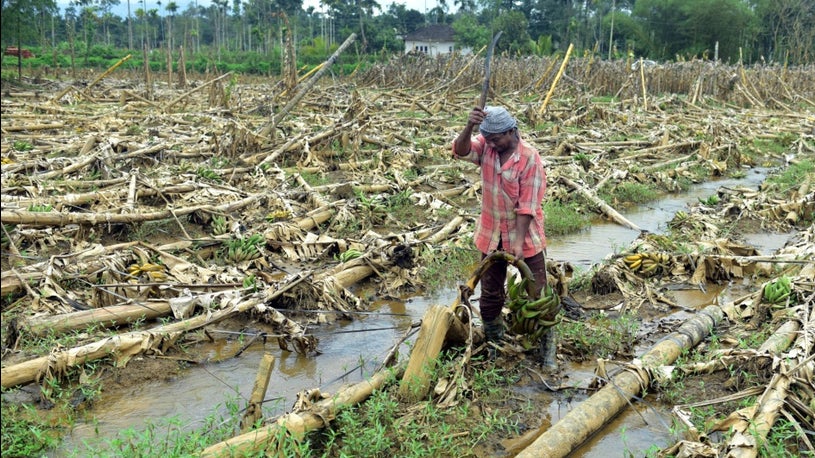In the complex and unpredictable realm of agriculture, where external factors like weather conditions, pests, and market fluctuations can significantly impact yields, crop insurance emerges as a critical safeguard for farmers. Defined as a financial tool designed to mitigate the inherent risks associated with farming, crop insurance plays a pivotal role in providing stability and resilience to those engaged in agricultural pursuits.
Types of Crop Insurance
Navigating the landscape of crop insurance involves a nuanced understanding of its diverse types, each offering a unique approach to risk mitigation for farmers. One primary category encompasses yield-based insurance, wherein coverage is determined by the historical production performance of the farm. This can manifest through schemes such as Actual Production History (APH) or, alternatively, through index-based insurance models, which utilize external indicators like weather indices.
A second major category is revenue-based insurance, an approach that considers both the yield and the prevailing commodity prices. This dual consideration provides farmers with a comprehensive risk management tool, acknowledging the interconnected dynamics of production and market forces. Farmers are thus equipped with a more holistic coverage that guards against financial uncertainties arising from fluctuations in both production output and market valuations.
How Crop Insurance Works
Understanding the mechanics of crop insurance involves delving into the intricacies of its functioning. The enrollment and application process form the initial steps, where farmers assess their eligibility based on predetermined criteria. Premium calculations, a pivotal aspect, take into account various factors such as historical production data and chosen coverage levels.
The coverage periods extend from planting to harvest, providing a comprehensive shield against perils that can jeopardize crops, ranging from drought and floods to pest infestations. During these periods, farmers witness the practical application of their chosen insurance, with the effectiveness contingent on the accuracy of the risk assessment and coverage parameters.
Should adverse events unfold, the claims process comes into play. Farmers undergo a meticulous process of loss assessment, requiring detailed documentation and timely reporting. This meticulous approach ensures that the compensation received is commensurate with the actual losses incurred. The settlement of claims, therefore, becomes a critical phase, embodying the financial recovery aspect of crop insurance.
Government Role in Crop Insurance
The orchestration of crop insurance involves a significant governmental role, with the Federal Crop Insurance Corporation (FCIC) serving as a linchpin in the regulatory framework. The government’s involvement is manifested through subsidies and support mechanisms designed to bolster farmers’ participation in crop insurance programs. These subsidies alleviate the financial burden on farmers, making insurance premiums more accessible and affordable.
Government policies and regulations shape the landscape of crop insurance, with periodic updates reflecting the evolving dynamics of agriculture and risk management. These regulations not only ensure the integrity of insurance programs but also strive to strike a balance between protecting farmers and maintaining the fiscal sustainability of the overall system.
Advantages and Challenges of Crop Insurance
The landscape of crop insurance is marked by a spectrum of advantages and challenges, reflecting the nuanced interplay between risk mitigation and practical considerations for farmers. On the positive side, crop insurance stands as a formidable financial shield, offering farmers a robust mechanism to cope with the unpredictable nature of agriculture. This stability, in turn, fosters confidence and resilience within the farming community, providing a safety net against the vagaries of weather, pests, and market fluctuations.
Moreover, the multifaceted nature of crop insurance extends beyond mere risk protection. It serves as a cornerstone for stability, enabling farmers to plan for the future, make strategic investments, and contribute to the overall sustainability of agricultural practices. This financial security, coupled with the government’s supportive role through subsidies, amplifies the positive impact on farmers’ livelihoods.
However, amid the advantages, crop insurance is not without its challenges. Affordability emerges as a significant hurdle, as the financial constraints faced by many farmers can limit their ability to participate in insurance programs. The delicate balance between offering comprehensive coverage and maintaining affordability remains an ongoing challenge for policymakers and stakeholders.
Future Trends in Crop Insurance
Looking ahead, the future of crop insurance unfolds against the backdrop of emerging trends that promise to reshape its dynamics. Technological advancements are poised to play a pivotal role, with innovations such as remote sensing and data analytics offering unprecedented insights into crop health and environmental conditions. This data-driven approach holds the potential to revolutionize risk assessment, enabling more accurate and timely interventions.
Additionally, parametric insurance, a forward-looking concept gaining traction, seeks to streamline the claims process by linking payouts directly to predefined environmental or economic indicators. This departure from traditional loss assessment methods not only expedites the compensation process but also enhances the overall efficiency of crop insurance programs.
Policy innovations are also on the horizon, reflecting a concerted effort to tailor insurance options to the specific needs of diverse farming operations. Customized coverage solutions are envisioned to provide farmers with greater flexibility, allowing them to navigate the unique challenges associated with their geographical location, crop types, and farming practices.
Conclusion
In conclusion, the realm of crop insurance stands as a crucial pillar in safeguarding the livelihoods of farmers amidst the uncertainties inherent in agriculture. As we’ve delved into its nuances, it becomes evident that the diverse types of crop insurance, coupled with the intricate mechanics of enrollment, coverage, and claims, weave a comprehensive safety net for those toiling in the fields.

